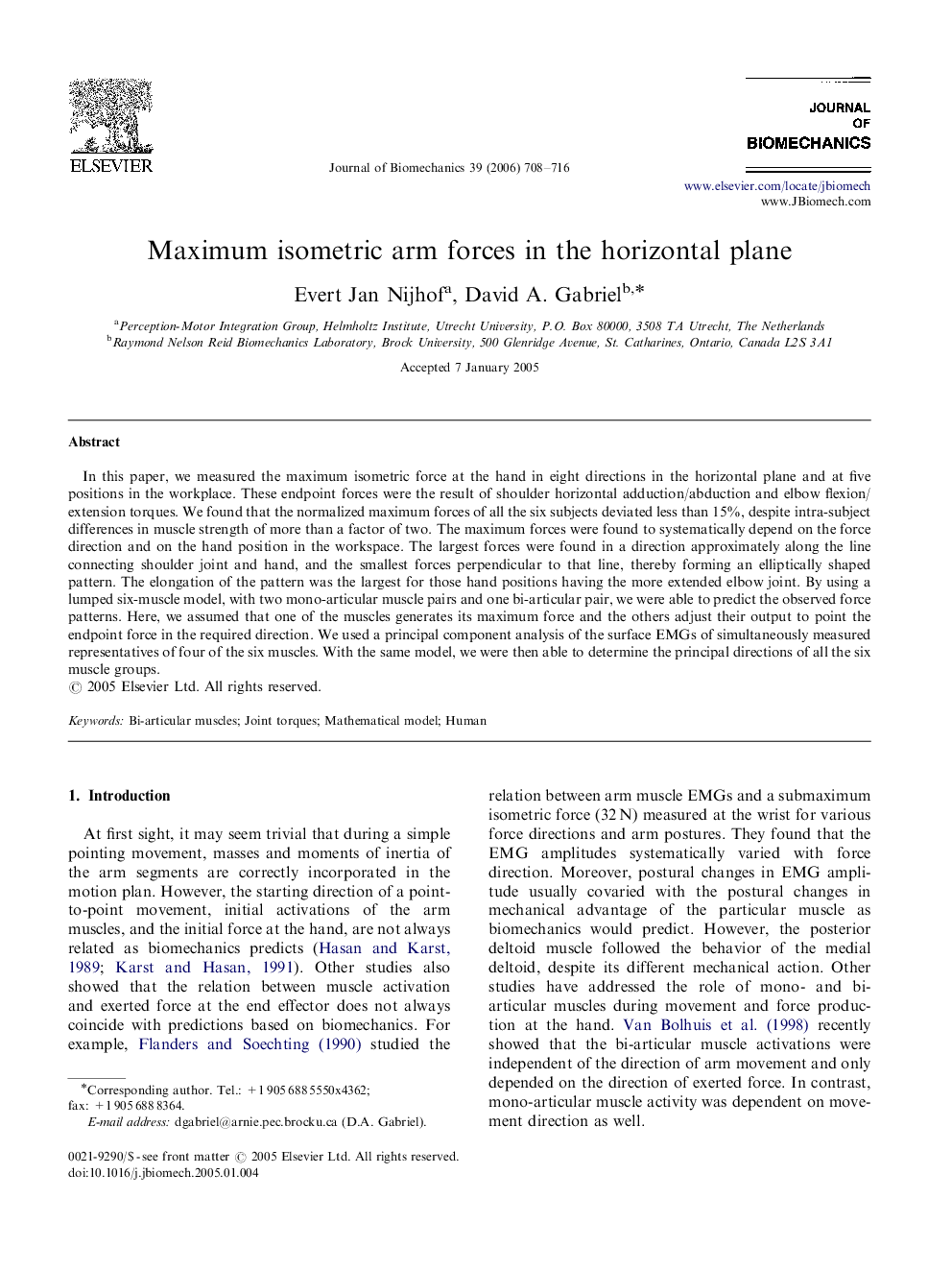| Article ID | Journal | Published Year | Pages | File Type |
|---|---|---|---|---|
| 875198 | Journal of Biomechanics | 2006 | 9 Pages |
In this paper, we measured the maximum isometric force at the hand in eight directions in the horizontal plane and at five positions in the workplace. These endpoint forces were the result of shoulder horizontal adduction/abduction and elbow flexion/extension torques. We found that the normalized maximum forces of all the six subjects deviated less than 15%, despite intra-subject differences in muscle strength of more than a factor of two. The maximum forces were found to systematically depend on the force direction and on the hand position in the workspace. The largest forces were found in a direction approximately along the line connecting shoulder joint and hand, and the smallest forces perpendicular to that line, thereby forming an elliptically shaped pattern. The elongation of the pattern was the largest for those hand positions having the more extended elbow joint. By using a lumped six-muscle model, with two mono-articular muscle pairs and one bi-articular pair, we were able to predict the observed force patterns. Here, we assumed that one of the muscles generates its maximum force and the others adjust their output to point the endpoint force in the required direction. We used a principal component analysis of the surface EMGs of simultaneously measured representatives of four of the six muscles. With the same model, we were then able to determine the principal directions of all the six muscle groups.
